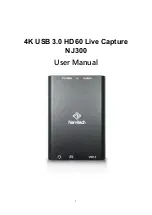
5
Maintenance
Entering the Water
1.
If possible, we recommend entering the water without your housing to
ensure that you are comfortable and your life-saving equipment is in
working order. Once you are stable, have someone pass your camera
housing to you.
2.
Submerge the housing at the surface of the water and visually confirm that
there are no signs of water intrusion or a steady stream of bubbles coming
from one of the housing’s seals. If water does appear to be entering the
housing return to the surface as quickly as possible. Please observe all
necessary safety precautions. NEVER ascend faster than accepted safety
limits.
3.
Once submerged and confirmed to be watertight, use your hand to gently
flush away any small bubbles that may be on the face of the lens. Bubbles
will produce soft focus spots in your photo or video.
Post-Dive
1.
Rinse the housing in fresh water. With the camera off, press each button
while submerged in fresh water to flush out any salt or debris to ensure
smooth operation on future dives.
2.
NEVER leave your housing in the fresh water rinse tank. Collisions with
other peoples’ gear can cause scratches or damage your equipment.
3.
Stow the housing in a shaded place where it is protected from impact or
overheating. If no shade is available, we recommend covering the housing
with a towel or cloth.
4.
Check the memory card capacity and battery life of your camera. Recharge
as necessary.
5.
Always re-check o-ring seals after opening the housing.


























